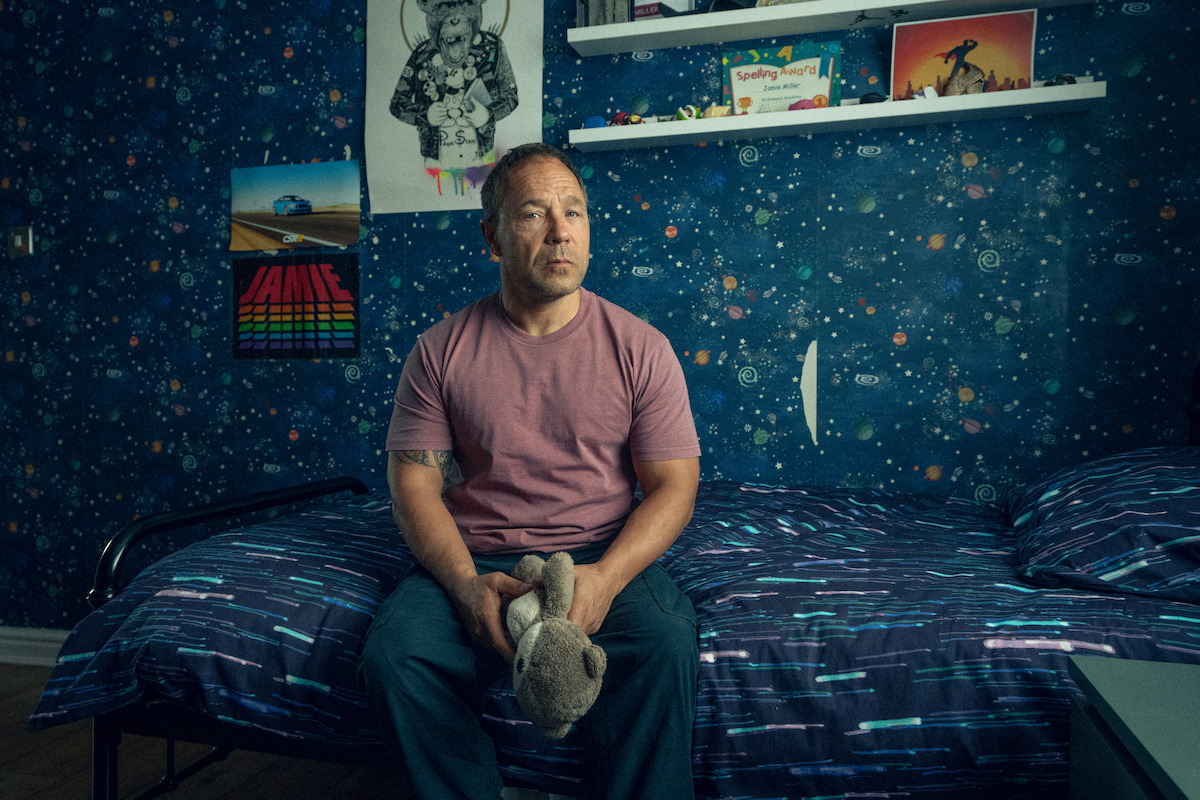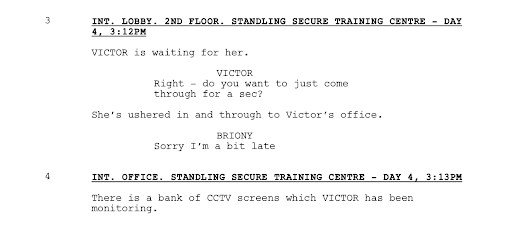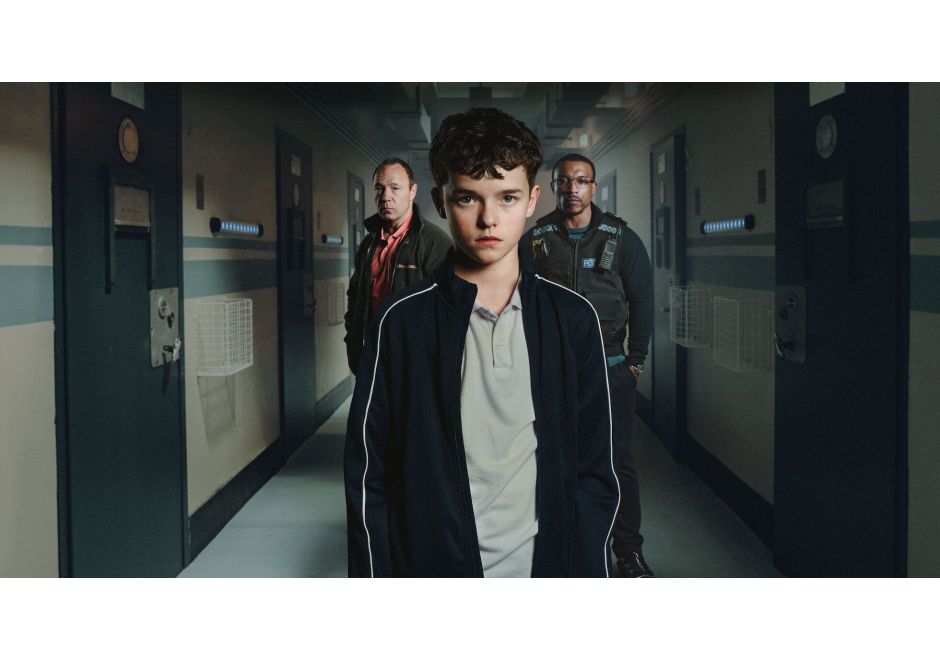Netflix’s Adolescence has made an impact on Hollywood. Not only did the show do very well at the 77th Emmy Awards, taking home the award for Outstanding Limited Series and five other awards, but the British crime drama stands out for its use of one continuous shot per episode to create intense emotions around an already intense situation.
Following 13-year-old Jamie Miller (Owen Cooper), who is arrested on suspicion of murdering his female classmate, Adolescence was conceived as a single-shot story by show creators and writers Jack Thorne and Stephen Graham.
While reading the scripts doesn’t give away the writer’s intentions to film each episode in one take, understanding your story structure, the camera’s motivation in the action lines, and establishing space and time in scene headings make writing a one-take television episode possible.
Crafting a Clear Structure
What is a story without structure? Structure is the framework that arranges a story’s elements into a coherent, engaging sequence for the audience, while shaping the pacing, organizing events, and driving character development. Every screenplay operates within a structure, even stories experimenting with form or visual language.
In a one-shot, the story can’t rely on edits to mark act breaks. That means act shifts can’t be masked by time jumps or transitions. The escalation must feel continuous, like a single piece of music building toward its climax. The Adolescence writers approached writing a one-shot story by following the tonal goals of each act.
“The idea was to write it like a play – great playwright names were thrown around like such names were possible to emulate (they weren’t),” writers Graham and Thorne explained in a foreword to Episode 3, published by Deadline. “David Mamet was mentioned more than once, and Oleanna was a huge inspiration. The [Adolescence] script was structured in three acts. The first was tender, the second was truth-telling, the final act was desperation.”
In a one-shot screenplay, structure unfolds in real time. The audience doesn’t skip ahead or cut away; they’re locked in with the characters. That means every structural beat must be earned on the page through an organic escalation of tension and emotion. Structure becomes the silent motivator not just for the characters, but for the camera itself.
For screenwriters, the takeaway is that structure isn’t just three acts on a whiteboard. It’s a tonal map of your story. Think about the emotional architecture: what do you want Act 1 to feel like for your characters and audience? How must that change in Act 2? What emotional crash or revelation defines Act 3? When you frame acts this way, structure stops being a formula and starts being a tool to control the audience’s experience moment to moment.


What's Motivating the Camera?
Motivation is a screenwriter’s superpower. It’s the “why” behind a character’s actions, decisions, and behaviors, driving the story toward its climax while helping the audience understand how we got here.
While dialogue can reveal motivation, action lines are where it truly shines. They provide subtext that deepens your storytelling and serve as a blueprint for directors and cinematographers to shape the film’s visual language, including when oners will or won’t be used. In a single-shot project, every action has to pull double duty: motivating both the characters and the camera.
This was a challenge cinematographer Matthew Lewis faced on Adolescence. “Our writer Jack Thorne was super collaborative and wanted to know where [the one-take] didn’t work,” Lewis told Variety. “Phil [Barantini] or I would email him and say, ‘The camera travels too far by itself, and we need motivation to get from here to here.’”
Thorne would adjust, adding moments that justified the camera’s movement or rewriting scenes to solve staging challenges. Sometimes this meant showing how a character moved from room to room; other times it was about giving the camera a reason to shift perspective.
Ultimately, the camera’s motivation is inseparable from the characters’ motives. Why must this action be seen? What impact does it have on the story and its themes? Each action line should answer those questions with purpose. When it does, it not only motivates the camera and the characters, but it also strengthens the entire narrative.
Establishing the Time and Place
Why does the reader need to know where we are in the story? Because without that anchor, nothing makes sense. This is why consistent scene headings are essential when formatting a screenplay. Also known as slug lines, they tell us where and when the scene happens.
In Adolescence, the screenplay uses scene headings to guide the reader through each moment, almost minute by minute.


On the page, slug lines are directions for the reader. But in a one-shot, they’re also a quiet nudge to the camera: here’s the new space you must travel to, here’s the next moment to capture without interruption.
Scene headings can also serve as a release valve. In a one-take script, a new slug line can feel like a breath for both the characters and the audience. In Episode 3, a new heading arrives after twelve pages of tense dialogue between Jamie and Briony:


That simple scene heading acts like a cut without cutting, giving both the audience and the characters a moment to breathe after an intense moment. Essentially, these slug lines are the punctuation marks of a screenplay, shaping rhythm and impact, even when the camera never stops moving.
Writing a one-take screenplay isn’t about gimmicks or showing off technical skills. It’s about controlling your craft and sharpening your screenwriting tools. When you can’t cut away, every line of dialogue, every movement, and every slug line carries more weight. Structure gives your story momentum, action lines motivate the camera as much as the characters, and scene headings punctuate the flow without breaking it.

